Install the app
How to install the app on iOS
Follow along with the video below to see how to install our site as a web app on your home screen.
Note: This feature may not be available in some browsers.
-
Please take a moment and update your account profile. If you have an updated account profile with basic information on why you are on Air Warriors it will help other people respond to your posts. How do you update your profile you ask?
Go here:
Edit Account Details and Profile
You are using an out of date browser. It may not display this or other websites correctly.
You should upgrade or use an alternative browser.
You should upgrade or use an alternative browser.
Ship Photo of the Day
- Thread starter Randy Daytona
- Start date
hlg6016
A/C Wings Here
Hey now, I'm a legend in my own mind over here.
skybert
Skybert
Worlds greatest wingman
Who would've thunk it? Baylander and steel beach in NYC.
From this:
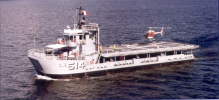
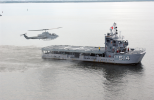
To this:
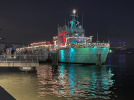
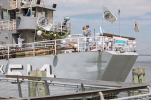

 www.nytimes.com
www.nytimes.com

 www.baylander.nyc
www.baylander.nyc
From this:


To this:



They Needed a Place to Marry. Suddenly Their Ship Came In. (Published 2020)
Max Krauss and Emily Young wed aboard the U.S.S. Baylander, which happened to be docked outside his parents’ Harlem home at just the right time.

The Baylander - West Harlem, New York City, NY
Baylander started its service life in 1968 as harbor utility craft YFU-79 during the Vietnam War. It was one of 16 Skilak class lighters that were purchased by the US Navy and used to move m...
Pride of the British Fleet, "The Mighty Hood" Commissioned in 1920, she had a 860 ft length, 104 ft beam and 47,000 tons at full load. 144,000 HP gave her 32 knots when new, a little slower as she aged. Incorporating lessons from Jutland, armor was added on causing her to ride low in the water and was quite wet causing her to also be known as the "largest submarine in the navy" - but the constant dampness also led to an abnormally high rate of tuberculosis among her crew.
The main striking power was her 8 (4 x 2) 15" main guns throwing a 1900 lb shell at 2450 FPS - similar to the Bismarck's 15" guns 1800 lb shell at 2700 FPS. For comparison, the American and Japanese battleships were launching shells an order of magnitude bigger: the Iowa's superheavy 16" 2700 lb AP shell at 2500 FPS and the Yamato's 18" 3200 lb shell at 2600 FPS.
As known, the Hood went down after Bismarck's 5th salvo, catching a 15" shell in the magazines while turning 20 deg to port at speed - the ship went down in 3 minutes and only 3 crewmembers survived. 24 May 1941
Microsoft co-founder Paul Allen led an expedition to successfully recover the ship's bell from HMS Hood.
http://www.dailymail.co.uk/news/art...l-Allen-formally-unveiled-Princess-Royal.html
https://en.wikipedia.org/wiki/HMS_Hood



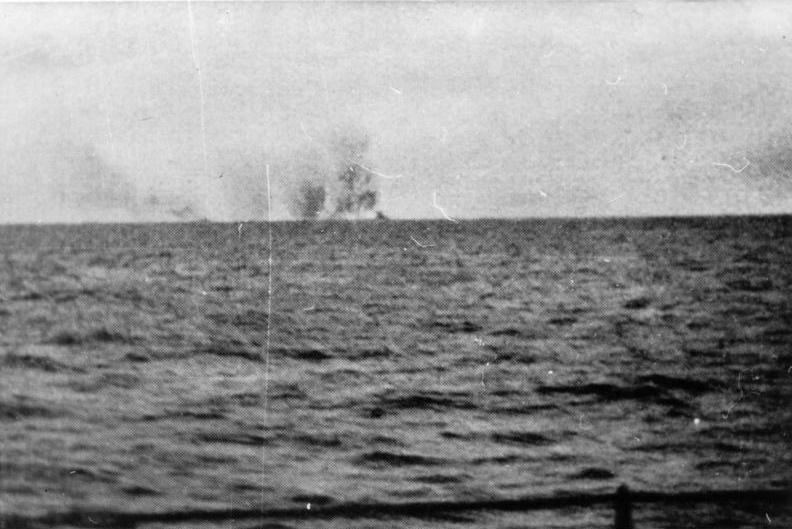
Hood during and after the explosion; sketch prepared by Captain JC Leach (commanding Prince of Wales) for the second board of enquiry in 1941, and photo from the Bundesarchiv. The column of smoke or flame that erupted from the vicinity of the mainmast (immediately before a huge detonation obliterated the after part of the ship from view) is believed to have been the result of a cordite fire venting through the engine-room ventilators.

Really like the youtube channel on naval history by Drachininfel. The HMS Hood, tired and worn out, was due in the yards for a major overhaul in late ‘41 - early ‘42. If the Hood had survived the encounter with the Bismarck, the video discusses and shows what a rebuilt Hood would have looked like, much like the Standard class US battleships were rebuilt after Pearl Harbor. It is worth noting that the Hood was the fastest capital ship in the Royal Navy with dimensions similar to the Iowa class.
USS Borie (DD-215), a Clemson class destroyer, alternately known as a 4 stacker or a flushdeck. The Borie engaged with U-405 in one of the strangest battles of WW2, where the Borie attempted to ram the submarine but heavy seas pitched her up and landed on top (perpendicular) of the U-Boat. A pitched night battle then ensued as the destroyer’s guns could not depress low enough to engage the submarine. Machine guns, tommy guns, shotguns and knives were used until the seas separated the 2 combatants with U-405 losing 35 of its 49 crewman. Borie was finally able to land a knockout blow and the submarine surrendered with the surviving crewman being taken aboard the destroyer; however by daylight it was evident the destroyer was mortally wounded from the stress of the hull being twisted in heavy seas while on top of the U-Boat and was intentionally sunk the next day by friendly fire. 2 November 1943. Good article in wikipedia. https://en.m.wikipedia.org/wiki/USS_Borie_(DD-215)
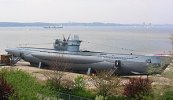
A Type VIIc U-Boat (without its 88mm deck gun)
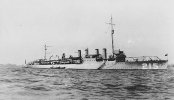
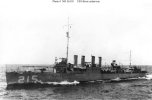
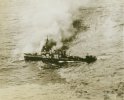
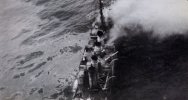

A Type VIIc U-Boat (without its 88mm deck gun)




A real life SWO wet dream!USS Borie (DD-215), a Clemson class destroyer, alternately known as a 4 stacker or a flushdeck. The Borie engaged with U-405 in one of the strangest battles of WW2, where the Borie attempted to ram the submarine but heavy seas pitched her up and landed on top (perpendicular) of the U-Boat. A pitched night battle then ensued as the destroyer’s guns could not depress low enough to engage the submarine. Machine guns, tommy guns, shotguns and knives were used until the seas separated the 2 combatants with U-405 losing 35 of its 49 crewman. Borie was finally able to land a knockout blow and the submarine surrendered with the surviving crewman being taken aboard the destroyer; however by daylight it was evident the destroyer was mortally wounded from the stress of the hull being twisted in heavy seas while on top of the U-Boat and was intentionally sunk the next day by friendly fire. 2 November 1943. Good article in wikipedia. https://en.m.wikipedia.org/wiki/USS_Borie_(DD-215)
View attachment 28654
A Type VIIc U-Boat (without its 88mm deck gun)
View attachment 28655
View attachment 28656
View attachment 28657
View attachment 28658
And to finish the year, IJN Yamato. Number of items that are interesting: unlike US and British warships which featured 40mm Bofors everywhere, the Yamato had nothing between light 25mm AA guns and heavy 127mm AA guns. As calculated on www.navygeneralboard.com, the Yamato had 1/3 less AA firepower than the Iowa class with the Iowa able to put 44,400 lbs of steel in the air per minute in an AA role while the Yamato could only manage 27,800 lbs.
Japan also test fired a 20.1" cannon that was to be on the next class of battleships. This monster fired a 4,400 lb shell (for comparison, the superheavy shell from the Iowa class weighed 2,700 lbs). The turret ring size for a twin mount of 20.1" was the same as the turret ring for the triple mount 18.1". As the Japanese Navy had previously pulled triple 6" guns of the Mogami class cruisers and replaced them with twin mount 8" rifles, one wonders if they had plans for the same thing with the Yamato class. http://www.navweaps.com/Weapons/WNJAP_20-45.php
What would have happened if the Yamato and/or the Musashi had been committed to the naval battles around Guadalcanal. My understanding is that the fuel consumption was so high, and Japan's fuel reserves were so low, that the fuel could not be spared. Other thoughts include the Japanese Navy withdrawing every night at high speed to not be in the area during daylight and the big ships were somewhat slower than the Hiei and the Kirishima. Any thoughts?
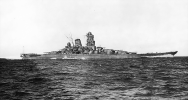
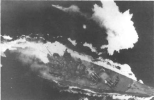
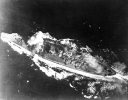

As originally designed
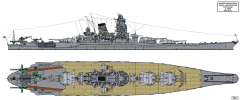
After removal of abeam 6" triple turrets and a large increase of AA guns.
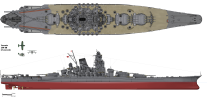
Japan also test fired a 20.1" cannon that was to be on the next class of battleships. This monster fired a 4,400 lb shell (for comparison, the superheavy shell from the Iowa class weighed 2,700 lbs). The turret ring size for a twin mount of 20.1" was the same as the turret ring for the triple mount 18.1". As the Japanese Navy had previously pulled triple 6" guns of the Mogami class cruisers and replaced them with twin mount 8" rifles, one wonders if they had plans for the same thing with the Yamato class. http://www.navweaps.com/Weapons/WNJAP_20-45.php
What would have happened if the Yamato and/or the Musashi had been committed to the naval battles around Guadalcanal. My understanding is that the fuel consumption was so high, and Japan's fuel reserves were so low, that the fuel could not be spared. Other thoughts include the Japanese Navy withdrawing every night at high speed to not be in the area during daylight and the big ships were somewhat slower than the Hiei and the Kirishima. Any thoughts?




As originally designed

After removal of abeam 6" triple turrets and a large increase of AA guns.

ABMD
Bullets don't fly without Supply
Battleship USS Iowa (BB-61) in Shakedown Tests - February 1943
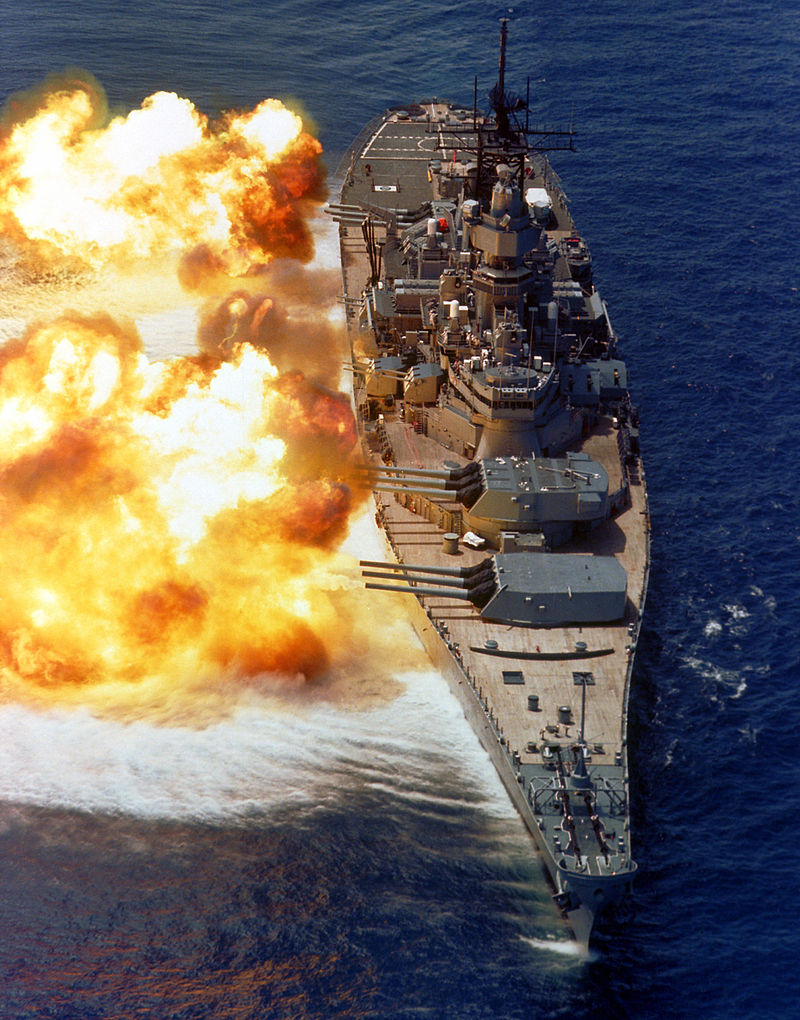
A bow view of the battleship USS IOWA (BB-61) firing its Mark 7 16-inch/50-caliber guns off the starboard side during a fire power demonstration.
I'm pretty sure this picture was on the cover of Shipmate back in the late 80's or early 90's. I remember seeing it as a kid in my dad's office, he had a framed copy of the cover photo on his office wall.
Yeah, these ships were derided within the IJN as Hotel Yamato and Musashi since they spent so much time at anchor due to their high fuel consumption. This high fuel usage and Japan's strategic fuel situation prevented them from being used even early in the war. Even if they had been used in SOPAC they would have been sunk by air power as they eventually were.And to finish the year, IJN Yamato. Number of items that are interesting: unlike US and British warships which featured 40mm Bofors everywhere, the Yamato had nothing between light 25mm AA guns and heavy 127mm AA guns. As calculated on www.navygeneralboard.com, the Yamato had 1/3 less AA firepower than the Iowa class with the Iowa able to put 44,400 lbs of steel in the air per minute in an AA role while the Yamato could only manage 27,800 lbs.
Japan also test fired a 20.1" cannon that was to be on the next class of battleships. This monster fired a 4,400 lb shell (for comparison, the superheavy shell from the Iowa class weighed 2,700 lbs). The turret ring size for a twin mount of 20.1" was the same as the turret ring for the triple mount 18.1". As the Japanese Navy had previously pulled triple 6" guns of the Mogami class cruisers and replaced them with twin mount 8" rifles, one wonders if they had plans for the same thing with the Yamato class. http://www.navweaps.com/Weapons/WNJAP_20-45.php
What would have happened if the Yamato and/or the Musashi had been committed to the naval battles around Guadalcanal. My understanding is that the fuel consumption was so high, and Japan's fuel reserves were so low, that the fuel could not be spared. Other thoughts include the Japanese Navy withdrawing every night at high speed to not be in the area during daylight and the big ships were somewhat slower than the Hiei and the Kirishima. Any thoughts?
View attachment 28702
View attachment 28703
View attachment 28704
View attachment 28705
As originally designed
View attachment 28713
After removal of abeam 6" triple turrets and a large increase of AA guns.
View attachment 28710
Yeah, these ships were derided within the IJN as Hotel Yamato and Musashi since they spent so much time at anchor due to their high fuel consumption. This high fuel usage and Japan's strategic fuel situation prevented them from being used even early in the war. Even if they had been used in SOPAC they would have been sunk by air power as they eventually were.
I'm pretty sure you have seen the articles but some might not know that back in '42-'43, US torpedoes were notoriously unreliable (both the Mark 13 aerial torpedo and the Mark 14 used on ships and subs) which leaves the dive bombers as the only reliable aerial weapon - then again, the Yamato seemed to have problems with its AA guns at high elevations. The question is: without torpedoes, how many bomb hits would you need? Thoughts?
It is interesting to think about how the Guadalcanal campaign could have gone differently if either side had committed massed forces instead of kind of piecemeal
Well, Musashi might be a good look at the math example. She was stopped by a torpedo but not sunk. Later a 500 lb bomb broke through two decks and shattered an engine room allowing eleven more torpedo hits and four 1000 lb anti-ship bombs to hit her along with nine more bombs and a bunch of aerial rockets.I'm pretty sure you have seen the articles but some might not know that back in '42-'43, US torpedoes were notoriously unreliable (both the Mark 13 aerial torpedo and the Mark 14 used on ships and subs) which leaves the dive bombers as the only reliable aerial weapon - then again, the Yamato seemed to have problems with its AA guns at high elevations. The question is: without torpedoes, how many bomb hits would you need? Thoughts?
If we discounted the torpedo hits and then lightened the heavy bomb hits (the Dauntless couldn’t carry the heavy AP bombs) I’d say it couldn’t be done with the available scout-dive-bomber squadrons in the area. VT-8 had Avengers on Guadalcanal and they could carry the heavier bombs...would they be enough?
A lot. Or maybe just one lucky one.I'm pretty sure you have seen the articles but some might not know that back in '42-'43, US torpedoes were notoriously unreliable (both the Mark 13 aerial torpedo and the Mark 14 used on ships and subs) which leaves the dive bombers as the only reliable aerial weapon - then again, the Yamato seemed to have problems with its AA guns at high elevations. The question is: without torpedoes, how many bomb hits would you need? Thoughts?
Even following an AA upgrade the super battleships were crushed by air power. Maybe the bombs wouldn't be enough to sink the hull but they'd certainly wreck the ship to the point it was a flaming wreck like the Hiei.
Or maybe she would have been countered by US BBs who enjoyed superior radar gunnery.
Or maybe a little bit of both.
Either way, Japan didnt have the gas to make use of the ships and they were both colossal wastes or limited resources.
